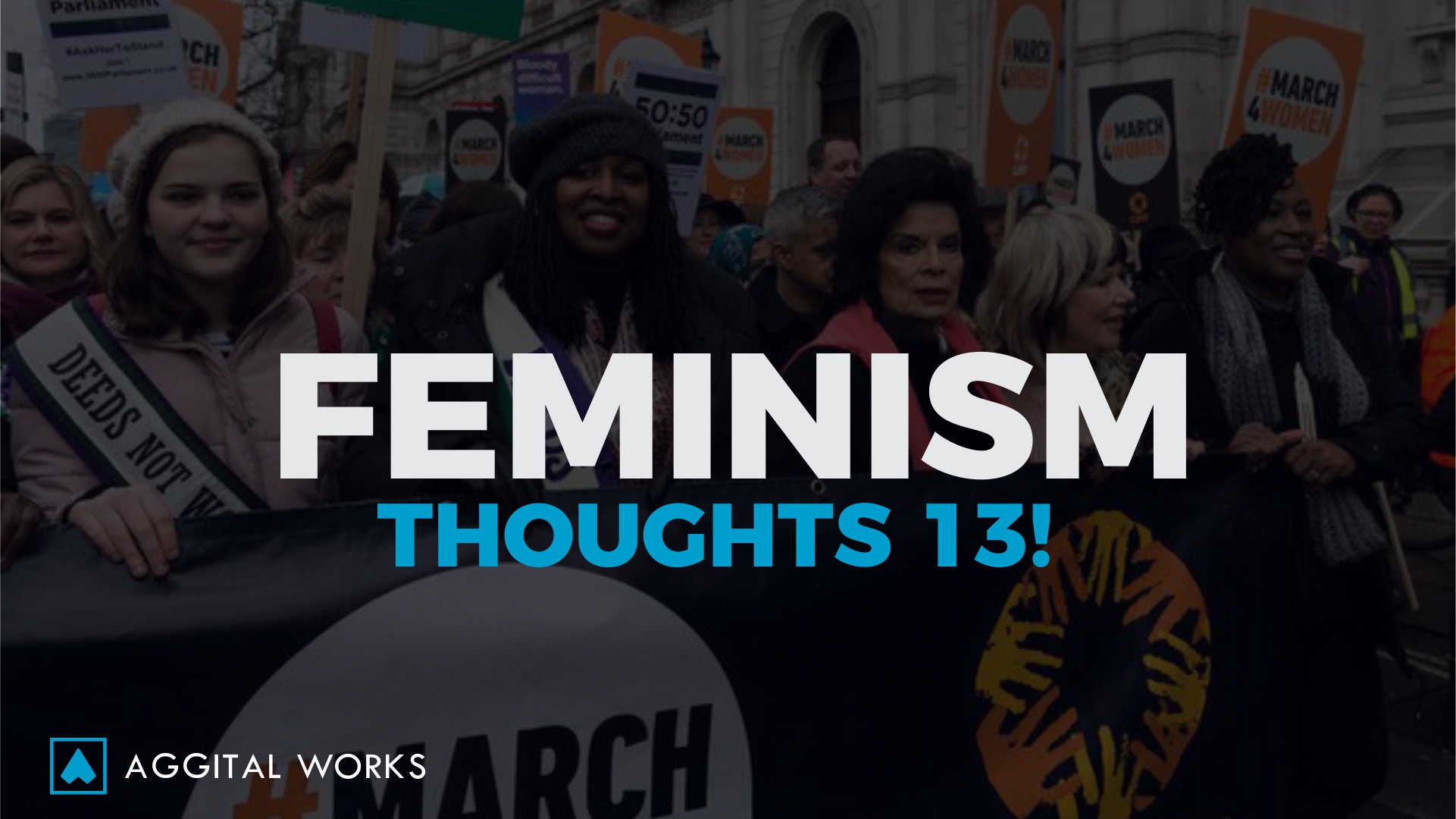Feminism… Thoughts. 13!

Hello, guys! I trust everyone’s doing great. Let’s continue where we left off on feminism. If you haven’t read the prequels, please do. Let’s delve right into it.
As we’ve seen in the previous articles, feminism is a range of socio-political movements and ideologies that aim to define and establish the political, economic, personal, and social equality of the sexes. Feminism incorporates the position that societies prioritize the male point of view, and that women are treated unjustly within those societies. Efforts to change that include fighting against gender stereotypes, and establishing educational, professional, and interpersonal opportunities and outcomes for women that are equal to those for men.
Feminist movements have campaigned and continue to campaign for women’s rights, including the right to vote, hold public office, work, earn equal pay, own property, receive education, enter contracts, have equal rights within marriage, and maternity leave. These feminist activists have also worked to ensure access to contraception, legal abortions and social integration, and to protect women and girls from rape, sexual harassment, and domestic violence. Changes in female dress standards and acceptable physical activities for females have often been part of feminist movements.
Some scholars consider feminist campaigns to be the main force behind major historical societal changes for women’s rights, particularly in the West, where they are near-universally credited with achieving women’s suffrage, gender-neutral language, reproductive rights for women (including access to contraceptives and abortion), and the right to enter into contracts and own properties.
Although feminist advocacy is and has been, mainly focused on women’s rights, some feminists argue for the inclusion of men’s liberation within its aims, because they believe that traditional gender roles also harm men. Again, we see this modelled nowhere in the history of feminism. Feminist theory, which emerged from feminist movements aims to understand the nature of gender inequality by examining women’s social roles and lived experiences; feminist theorists have developed theories in a variety of disciplines in order to respond to issues concerning gender.

Gender Stereotypes
A gender stereotype is a generic idea or preconception about qualities, characteristics, or functions that are or ought to be possessed by, or performed by, women and men. A gender stereotype is harmful when it limits women’s and men’s capacity to develop their personal abilities, pursue their professional careers and/or make choices about their lives.
Whether overtly hostile (such as “women are irrational”) or seemingly benign (“women are nurturing”), harmful stereotypes perpetuate inequalities.
Furthermore, gender stereotypes compounded and intersecting with other stereotypes have a disproportionately negative impact on certain groups of women, such as women from minority or indigenous groups, women with disabilities, women from lower groups or with lower economic status, migrant women, etc.
Gender stereotyping denotes the practice of attributing to an individual woman or man certain definite qualities, characteristics, or roles by reason only of her or his membership in the social group of women or men. Gender stereotyping is wrongful when it results in a violation of human rights and fundamental freedoms.
Anyway, we’ll stop here for the now. If you are looking to get an excellent web design company, do click on here!
For more reads, click on here.




